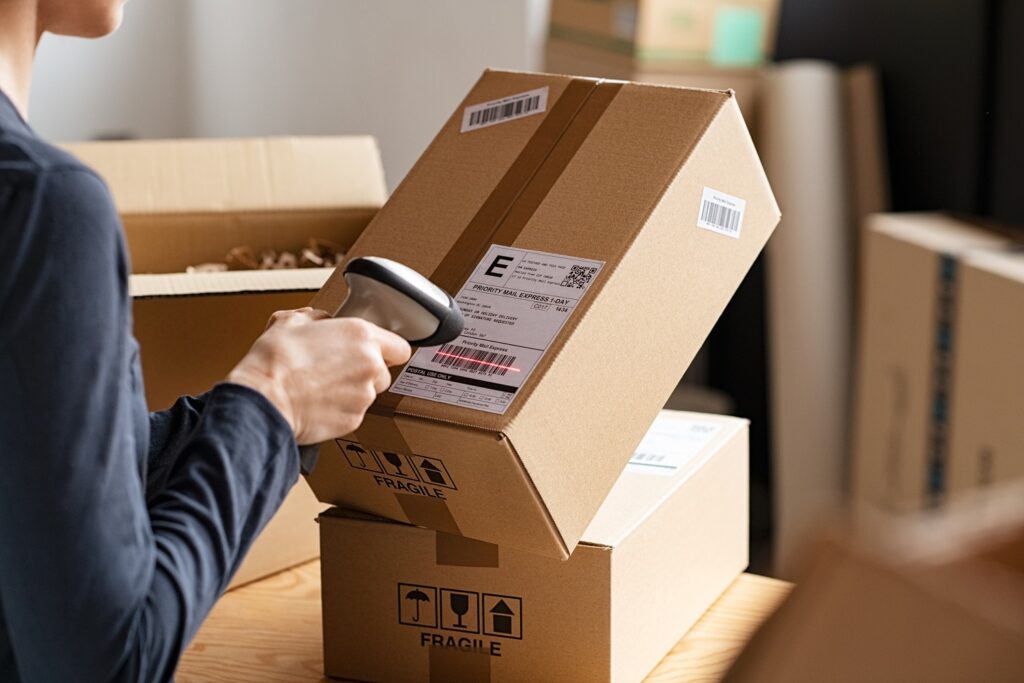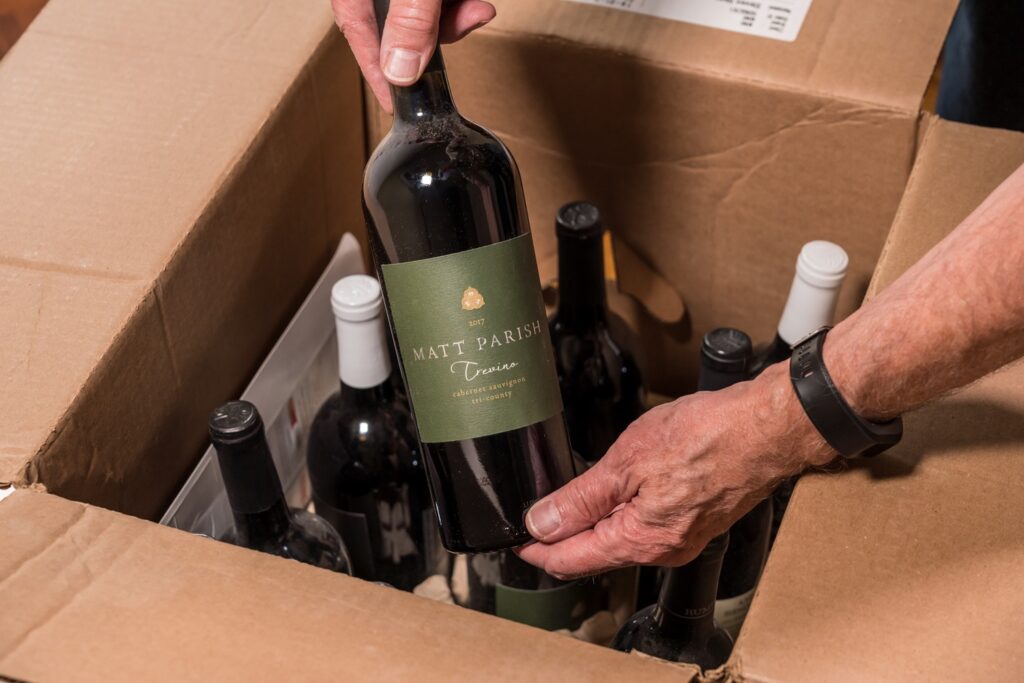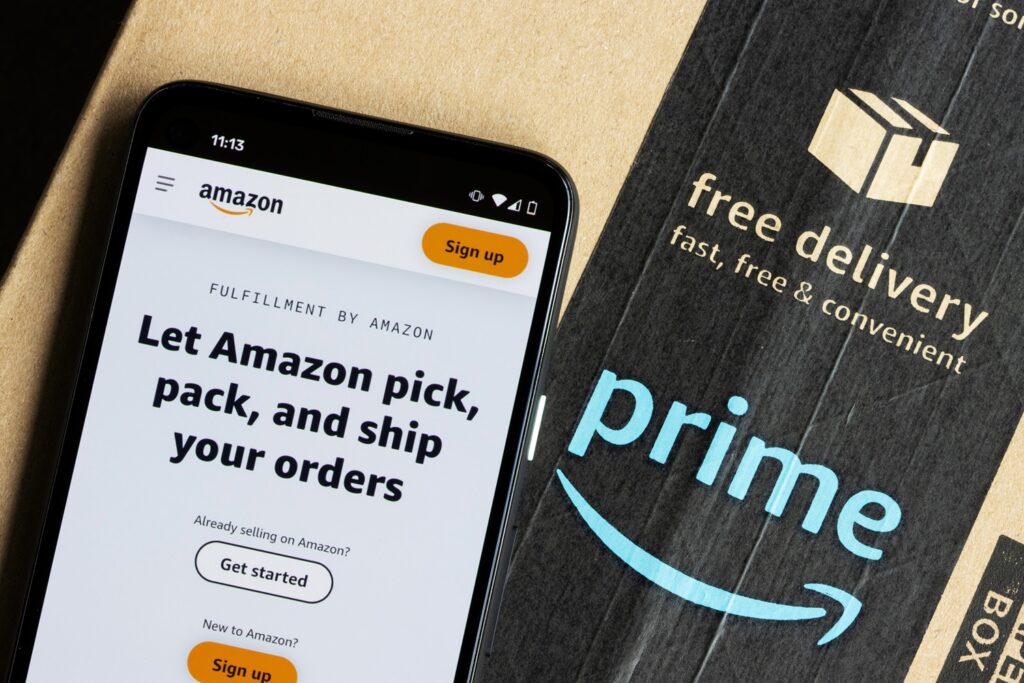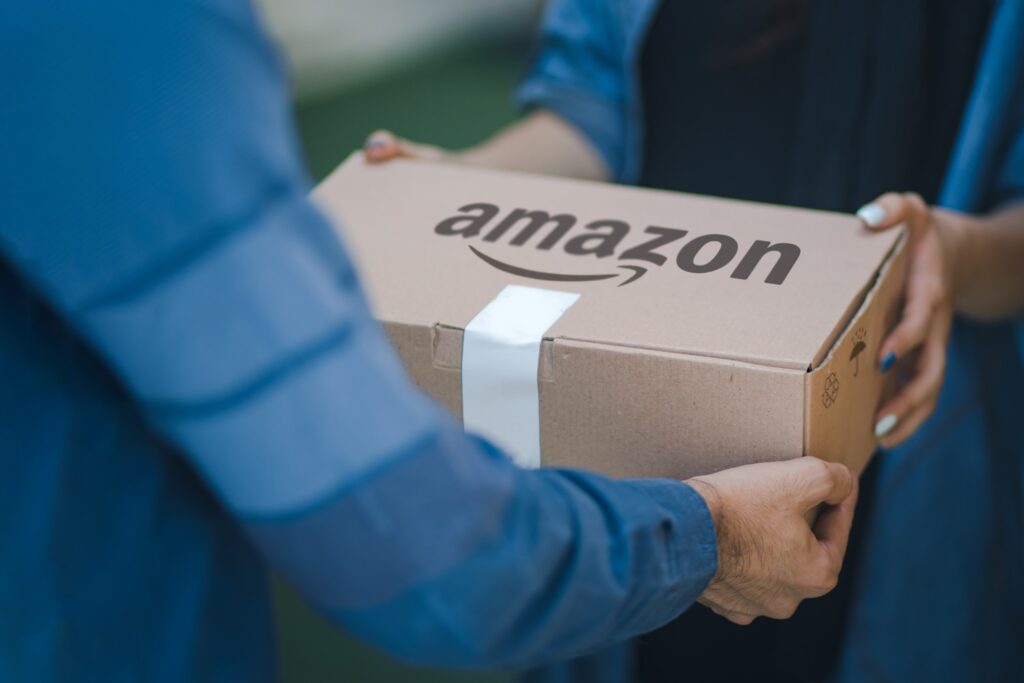What Is Amazon FBM? (Fulfilment by Merchant)

Amazon Fulfilment by Merchant (FBM) is one of the delivery mechanisms used by those who sell on Amazon. Essentially, it means the onus is on the Amazon seller to ensure the product is delivered to the end-user or customer. The merchant handles everything from accepting the order to organising shipment.
The alternative for Amazon merchants is Fulfilment by Amazon (FBA), but, for now, let’s take a closer look at FBM, how it operates, and what the benefits of using this system are.
Understanding Amazon FBM
FBM allows Amazon sellers to list their products on the Amazon Marketplace, but they are responsible for shipping and fulfilling orders themselves. In this method, sellers must independently handle inventory storage, order fulfilment, returns and customer service. Sellers often choose Amazon FBM with their own warehouse, who ship large or heavy items, want to use branded packaging, or prefer not to deal with complex pricing structures and storage fees.
However, it also requires more responsibility for shipping and customer service, which can be time-consuming and challenging. Amazon FBM fees typically include a monthly subscription fee, a small fee per order, and referral fees, which can vary depending on the seller’s plan and product type.
How does Amazon FBM work?
As the world’s largest online marketplace, Amazon remains a top platform for increasing product visibility, even if you use it only for purely advertising purposes. However, when it comes to accepting and fulfilling orders, FBM works slightly differently. Customers can still use the Amazon platform to search for your product and place an order. The key difference is that it’s up to the merchant to ensure the order is fulfilled and the product delivered to the customer.
This means the merchant must package, arrange to pick up and ensure delivery to the customer. They will also handle customer queries and answer any questions during order fulfilment.
Amazon FBA vs FBM: What’s the difference?
The key difference between Amazon FBA and Amazon FBM is who is responsible for fulfilling orders placed online. Essentially, if you choose to handle your orders using an FBM system, then, as the merchant or seller, you are responsible for ensuring the order is packaged, shipped, and delivered to the end user.
On the other hand, FBA handling is the responsibility of Amazon. Someone will purchase a product online, and Amazon is then responsible for ensuring the product is delivered to the customer on time. They take on the responsibility of packaging, shipping and delivering the goods. This is ideal if you do not have the resources to handle many orders. However, you do have to pay Amazon a premium rate for them to take care of the logistics for you.
When should you choose Amazon FBM?
For some, an FBM delivery and handling scheme may suit a business model better than others. For example, if a merchant has exclusive selling rights to a particular product or is the only supplier shop to stock that product, then an FBM goods-handling system will be more appropriate.
Merchants who use this method also gain much more control and visibility over who they do business with, stock take, sellable inventory, and shipping logistics. This may suit smaller businesses who need to ensure they fulfil specific customer orders, or who need to prioritise delivery. Setting up FBM delivery is also much easier for those just starting, as there is far less paperwork and far fewer monetary deductions.
FBM builds credibility for your store. From a branding point of view, FBM selling is beneficial for anyone selling unique products and small-volume or specialised businesses. The FBM option adds credibility to your products, business, and overall brand. You will build a positive reputation if you handle customer service and deliveries efficiently and professionally. If there is little chance of bulk orders, FBM is also better as it’s less likely you will become overwhelmed with many orders at once. In this respect, it’s also cost-effective.

The Benefits of Using Amazon FBM
Amazon FBM selling is not for everyone, but for the right business structure, it offers several benefits compared to Amazon FBA systems. The main benefits are as follows:
Access to Amazon’s customers with fewer fees
Amazon FBM only charges a monthly subscription fee, a small fee per order, and a referral fee, allowing sellers to take advantage of Amazon’s high-traffic site with fewer extra fees than FBA. Amazon is the world’s largest online marketplace, so using the platform is a great way to increase your product’s visibility and boost audience engagement. Handling the order fulfilment yourself means you spend less money on logistics handling.
Avoid Amazon’s strict FBA requirements
FBM has fewer rules and penalties for failing to comply with Amazon’s strict standards for each order, which can be a hassle for merchants to fulfil on Amazon. With FBM, you get to handle all the packaging and shipping methods, as well as take control of delivery timelines. There is far less red tape when choosing the FBM handling option.
Retain greater control of your business
With FBM, sellers gain complete control of their operations and can better ensure they provide the customer experience they want. Sellers can use their methods for packaging and delivering their products. This is beneficial as it allows sellers to form strong professional relationships with courier companies and packaging suppliers, giving merchants more control.
Merchants can provide better support
When you go with FBM, you can partner with a professional fulfilment company. Because you can choose this service, you can form a relationship with them whereby you keep communication open. This means you can provide quicker and more thorough support when issues arise, compared to Amazon’s support for FBA.
Flexibility in shipping delicate items
FBM allows more flexibility in packaging and shipping products needing more care. It’s the better option if your business sells products that require specific storage conditions, like certain temperatures or extra care. As the seller, you know the shipping requirements better than anyone, so FBM gives you more control over the quality assurance aspect of your business, thereby also boosting your business’ reputation.
Ability to use branded packaging
Sellers can use their packaging to maintain a consistent brand image. FBM allows you to get creative with your branding, and you’re now restricted to Amazon packaging. This helps make your business more recognisable when your products are delivered.
Avoid complex pricing structures and storage fees
FBM can be more cost-effective for certain products or sellers who don’t want to deal with Amazon’s pricing structures and fees. Choosing FBA is often more expensive if you only ship a few products. If you’re expecting a flurry of orders, it’s more time-efficient to go with FBA, but smaller businesses should opt for FBM to save money.
Focus on business
Amazon FBM allows sellers to focus on their business while handling inventory storage, order fulfilment, and customer service. It gives sellers a broader business overview while maintaining quality and operational control.

How much does Amazon FBM cost?
Before you decide on the fulfilment method to choose, you need to understand the full breakdown of fees so that you make the best financial decision for you and your business.
| Fee Category | Referral fee percentages | Applicable minimum referral fee (applied on a per-unit basis unless otherwise noted) |
| Amazon Device Accessories | 45% | $0.30 |
| Amazon Explore | 30% for Experiences | $2.00 |
| Automotive and Powersports | 12% | $0.30 |
| Baby Products | 8% for products with a total sales price of $10.00 or less, and 15% for products with a total sales price greater than $10.00 | $0.30 |
| Backpacks, Handbags, and Luggage | 15% | $0.30 |
| Base Equipment Power Tools | 12% | $0.30 |
| Beauty, Health and Personal Care | 8% for products with a total sales price of $10.00 or less, and 15% for items with a total sales price greater than $10.00 | $0.30 |
| Business, Industrial, and Scientific Supplies | 12% | $0.30 |
| Clothing and Accessories | 17% | $0.30 |
| Compact Appliances | 15% for the portion of the total sales price up to $300.00, and 8% for any portion of the total sales price greater than $300.00 | $0.30 |
| Computers | 8% | $0.30 |
| Consumer Electronics2 | 8% | $0.30 |
| Electronics Accessories1 | 15% for the portion of the total sales price up to $100.00, and 8% for any portion of the total sales price greater than $100.00 | $0.30 |
| Everything Else3 | 15% | $0.30 |
| Eyewear | 15% | $0.30 |
| Fine Art | 20% for the portion of the total sales price up to $100.00, 15% for the portion of the total sales price greater than $100.00 up to $1,000.00, 10% for the portion of the total sales price greater than $1,000.00 up to $5,000.00, and 5% for the portion of the total sales price greater than $5,000.00 | — |
| Footwear | 15% | $0.30 |
| Full-Size Appliances | 8% | $0.30 |
| Furniture | 15% for the portion of the total sales price up to $200.00, and 10% for any portion of the total sales price greater than $200.00 | $0.30 |
| Gift Cards | 20% | — |
| Grocery and Gourmet | 8% for products with a total sales price of $15.00 or less, and 15% for products with a total sales price greater than $15.00 | — |
| Home and Kitchen | 15% | $0.30 |
| Jewellery | 20% for the portion of the total sales price up to $250.00, and 5% for any portion of the total sales price greater than $250.00 | $0.30 |
| Lawn and Garden | 15% | $0.30 |
| Lawn Mowers and Snow Throwers | 15% for products with a total sales price of up to $500.00 8% for products with a total sales price greater than $500.00 | $0.30 |
| Mattresses | 15% | $0.30 |
| Media – Books, DVD, Music, Software, Video | 15% | — |
| Musical Instruments and AV Production | 15% | $0.30 |
| Office Products | 15% | $0.30 |
| Pet Products | 15%, except 22% for veterinary diets | $0.30 |
| Sports and Outdoors | 15% | $0.30 |
| Tyres | 10% | $0.30 |
| Tools and Home Improvement | 15% | $0.30 |
| Toys and Games | 15% | $0.30 |
| Video Game Consoles | 8% | — |
| Video Games and Gaming Accessories | 15% | — |
| Watches | 16% for the portion of the total sales price up to $1,500.00, and 3% for any portion of the total sales price greater than $1,500.00 | $0.30 |
Summary
If you need further advice on the best fulfilment option for you, then get in touch with Mercatus today. Our experts have been working with the Amazon marketplace for years. We’ll be able to advise you on pricing structures, handling techniques, shipping options and break down the options available to you so that you can make the best possible decision for your company and your customers.
We understand the ins and outs of FBM and FBA handling, so get in touch with Mercatus today and give your business the boost it deserves.

Amazon FBM FAQs
Should I choose FBA or FBM handling?
The fulfilment system you choose depends on the nature of your business and the products you sell. Experts suggest using FBM if your business has exclusive selling rights to a particular product or if the product you sell is specialised. You can always speak to the team at Mercatus if you want to learn more about your options.
Is FBA or FBM cheaper?
When you look at the two options at face value, FBM is cheaper. However, FBA may be more cost-effective if your business distributes large numbers of products out to customers regularly. For this reason, you need to analyse the nature of your business, projections, and budgets to determine which handling solution is best for your business.
What is the difference between FBA and FBM?
Simply put, FBA stands for Fulfilment by Amazon, which means that Amazon takes on the responsibility of packaging, shipping, and delivering your product sold on the marketplace. On the other hand, FBM, meaning Fulfilment by Merchant, places the responsibility on the seller to handle the logistics of delivering the product sold on Amazon.


